#f 82 twin mustang
Explore tagged Tumblr posts
Text

"How to troubleshoot your Twin Mustang"
Sure. Only 272 of these were built originally, 5 remain, and exactly 1 is airworthy... I'll get right on that 😅
#planeposting#still cant believe i got something this cool for a plane this rare for 5 bucks#im a habby plane nerd :]#twin mustang#f-82#f 82 twin mustang#experimental aircraft#mechanic#aviation maintenance#avgeek
3 notes
·
View notes
Text
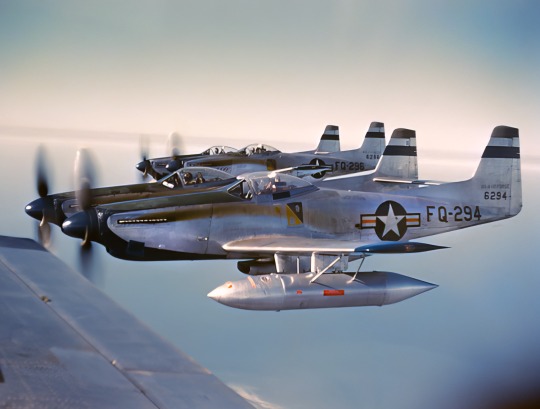
North American F-82Es Twin Mustang With External Tanks, 1948. ➤➤ LEARN MORE: https://youtu.be/8Qzp65KF7Fs
➤➤HD IMAGE: https://dronescapes.video/F82
#f-82#Twin Mustang#youtube#aircraft#airplane#aviation#dronescapes#military#documentary#aviation history#ww2#wwii#North american#aviation pioneer#aviation photography#aviation industry#plane#military plane#military aircraft#military history
193 notes
·
View notes
Text

F-82 Twin Mustangs in production at North American Inglewood (Circa 1948). Designed to travel over 3,200 km without refueling, the Twin Mustang's mission was to escort B-29s from the Philippines to Japan - however, the war ended well before the first production units were operational.
@RealAirPower1 via X
27 notes
·
View notes
Text

P-51 Mustang and F-82 Twin Mustang
23 notes
·
View notes
Photo

F-82 Twin Mustang. NMUSAF
44 notes
·
View notes
Text


On the left is a North American F-82G Twin Mustang and on the right is a North American F-82B Twin Mustang. The Twin Mustang is, quite literally, an airplane with two fuselages and, therefore, two cockpits, on a single wing. The idea was that it was a way to have two pilots and thus reduce fatigue during longer flights:
With a pilot in each fuselage, it reduced the problem of pilot fatigue on ultra-long-range missions. The P-82F* and G models carried a radar operator in the right cockpit instead of a co-pilot. Both engine throttles and both propellers were controllable from either cockpit by manually operated levers. The pilot's cockpit on the left contained the normal flight and engine instruments, while the co-pilot on the right had sufficient instruments for relief and emergency operation. A simplified cockpit arrangement improved pilot comfort, including a tilting, adjustable seat to reduce fatigue during long flights. (Source)
*The F-82 was originally designated the P-82; after WWII, redesignated all "pursuit" planes to "fighter" planes.
Nowadays, they seem to accomplish this sort of thing by putting additional seats in just one cockpit, but I guess they were really throwing every idea they had at the wall and seeing what stuck back in those days. And I guess this way you've got both pilots able to see straight ahead, which you don't get in modern-day two-seater fighter planes where the co-pilot (or whoever the second person is) sits behind the pilot.
Unfortunately, the museum doesn't specify exactly why this particular idea didn't stick, but I can only assume it had something to do with the ridiculousness of being completely physically separated from your copilot.
I don't know; while it's pretty cool how one pilot or the other can completely take over while the other one can put his seat back and take a nap, I feel like any radio trouble resulting in the two pilots (or pilot + radar operator) being unable to verbally communicate with one another could be a really big problem. Then again, I don't have any idea how common radio problems like that really are, so for all I know, this isn't actually a concern.
Anyway, these things (272 of them!) were ordered by the US military at the tail end of WWII and didn't arrive until 1946. They were used extensively during the Korean War, but were retired in 1953 in favor of fighter jets.
Fun fact about the Betty Joe (right): on February 27-28, 1947, she flew from Hawaii to New York, a distance of 5,051 miles, which is the longest non-stop flight ever made by a propeller-driven fighter plane. This really was a long-range aircraft.
Below are two additional photographs of the Betty Joe from the museum website where you can see her configuration a little bit better.

#National Museum of the United States Air Force#United States Air Force Museum#aviation history#airplanes#Korean War#Cold War#F-82#Twin Mustang#North American F-82 Twin Mustang#original post
1 note
·
View note
Text
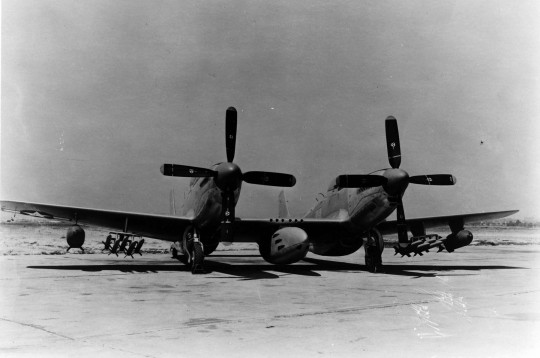
This is the 2nd prototype of the XP-82 Twin Mustang heavy escort fighter, circa mid-to-late-1945. It is, perhaps, my favorite WW2 era fighter.
It was, essentially, two P-51s welded together. It was conceived as an ultra-long range escort fighter, hence why it retained two cockpits, with full controls in each. The idea was that one pilot could rest for part of the mission, and hand off control to the other when he needed a break, alternating as needed. The XP-82 had a range of 1,400 miles (2,300 kilometers), a service ceiling of 40,000 feet (12,000 meters), and a top speed of 461 miles per hour.
It's fitted here with its standard six M3 .50cal machine guns (with 400 rounds per gun, firing at 1200 rpm). Additionally, it is equipped with two 500 pound bombs, ten 5" High Velocity Aircraft Rockets, and an experimental centerline gun-pod containing an additional eight M3 Browning .50cal machine guns (each, as before, with 400 rounds, firing at 1200 rpm). This brings the total cyclic rounds-per-minute of the aircraft to 16,800 rpm combined.
The gun pod would not be retained past the prototypes, as the majority of production was fitted out or converted to night fighter spec with a radar mounted under the center wing (often nicknamed "Long Dong" due to the characteristic shape of the radar fairing). The second cockpit was refitted into a radar operator's station without flight controls.

The non-night fighter versions used the space for two more hardpoints, allowing for up to four 1000 pound bombs or up to twenty-five 5" HVAR rockets.
The P-82 (later changed to F-82) would go on to serve in Korea, but would be very quickly replaced with jet fighters, and were retired in 1953.
52 notes
·
View notes
Text
Forgot I had a manual to the Twin Mustang shoved in a comicbook box under my bed. I'm totes obsessed with the ink illustrations in it + the yummy yummy maintenance data on one of the most epic (non radial*) piston plane engines ever made
*any radial engine is always instantly cooler than anything else in the room 😌
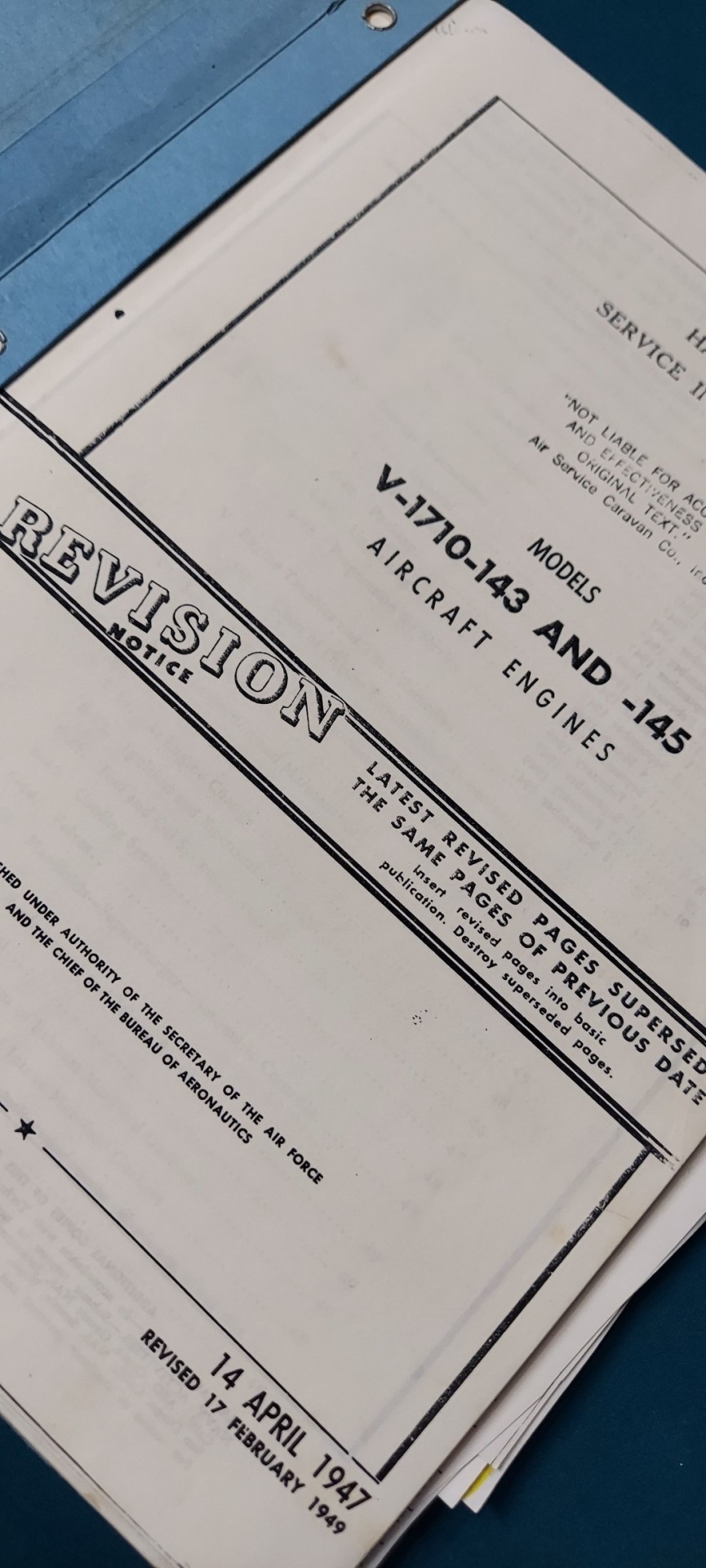
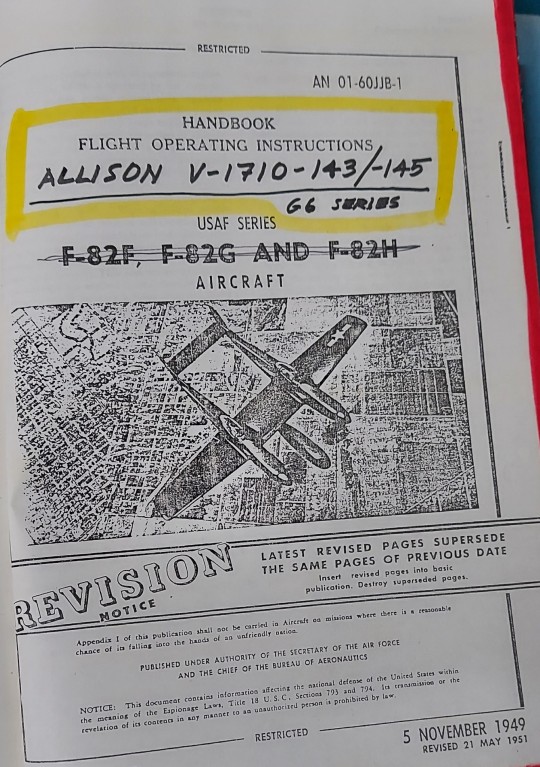

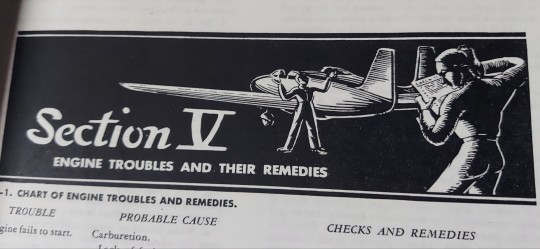


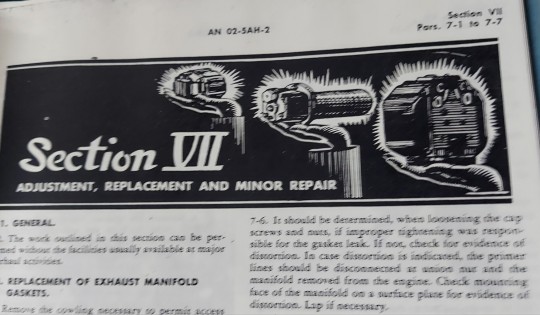


#planeposting#heyyyyy Warthunder yall want? ;3#planes#aviation#aviation maintenance#avgeek#twin mustang#f-82#f 82f#aviation history
20 notes
·
View notes
Text
developing a fixation on the f-82 twin mustang while shaking my head so people know i don’t agree with the american military
3 notes
·
View notes
Text
Wwii Planes North American F-82 Twin Mustang Fighter Hawaiian Shirt Outfit
Welcome to the North American F-82 Twin Mustang Fighter Hawaiian Shirt! This shirt is for men and women only! The plane is from the Hawaiian Shirt industry and is made from high-quality materials. The shirt is made to fit your body and has a comfortable fit. The plane is made to fly like a wild animal and has a lot of power and range. The shirt is made to
Get it here : Wwii Planes North American F-82 Twin Mustang Fighter Hawaiian Shirt Outfit
Home Page : tshirtslowprice.com

1 note
·
View note
Video
youtube
The Twin Mustang | When North American Merged Two P-51 Mustang | P-82 Aircraft | Weird Wings History
Jan 13, 2023 The North American F-82 Twin Mustang is the last American piston-engined fighter ordered into production by the United States Air Force. Based on the North American P-51 Mustang, the F-82 was originally designed as a long-range escort fighter for the Boeing B-29 Superfortress in World War II. The war ended well before the first production units were operational.
In the postwar era, Strategic Air Command used the aircraft as a long-range escort fighter. Radar-equipped F-82s were used extensively by the Air Defense Command as replacements for the Northrop P-61 Black Widow as all-weather day/night interceptors. During the Korean War, Japan-based F-82s were among the first USAF aircraft to operate over Korea. The first three North Korean aircraft destroyed by U.S. forces were shot down by F-82s, the first being a North-Korean Yak-11 downed over Gimpo Airfield by the USAF 68th Fighter Squadron.
Initially intended as a very long-range (VLR) escort fighter, the F-82 was designed to escort Boeing B-29 Superfortress bombers on missions exceeding 2,000 mi (3,200 km) from the Solomon Islands or Philippines to Tokyo, missions beyond the range of the Lockheed P-38 Lightning and conventional P-51 Mustangs. Such missions were part of the planned U.S. invasion of the Japanese home islands, which was forestalled by the surrender of Japan after the atomic bombings of Hiroshima and Nagasaki and the opening of Soviet attacks on Japanese-held territory in Manchuria.
The second prototype North American XP-82 Twin Mustang being flight-tested at Muroc Army Airfield, California
In October 1943 the North American Aircraft design team began work on a fighter design that could travel over 2,000 mi (3,200 km) without refueling. It consisted of a twin-fuselage design, parallel to the experimental German Messerschmitt Bf 109Z "Zwilling." Although based on the lightweight experimental XP-51F, which would later become the P-51H Mustang, it was actually a new design. North American Design Chief Edgar Schmued incorporated two P-51H Mustang fuselages lengthened by the addition of a 57 in (1,400 mm) fuselage plug located behind the cockpit where additional fuel tanks and equipment could be installed. These were mounted to a newly designed center wing section containing the same six .50 caliber (12.7mm) M3 Browning machine guns as a single-engine Mustang, but with more concentrated fire. The first XP-82 prototype was equipped with a removable centerline gun pod housing eight additional .50 caliber M3 Brownings, but this did not feature on production aircraft. An even more powerful centerline gun pod containing a 40 mm (1.6 in) cannon was considered, but was never built. The outer wings were reinforced to allow the addition of hard points for carrying additional fuel or 1,000 lb (450 kg) of ordnance. The two vertical tails were also from the XP-51F, but incorporated large dorsal fillets for added stability in case of an engine failure. The aircraft had a conventional landing gear with both wheels retracting into bays under each fuselage center section.
1 note
·
View note
Text
North American F-82 Twin Mustang
youtube
31 notes
·
View notes
Text
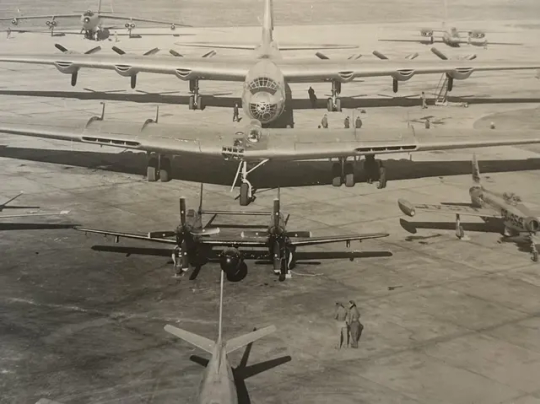
Some of the USAF's inventory in the 1950s. Starting from the front, you have the tail of an F-86, an F-82 Twin Mustang and an F-84 Thunderjet, YB-49, B-36, and in the back row a B-47 Stratojet on the left and a B-45 Tornado on the right.
57 notes
·
View notes
Note
Do you have a favourite plane?
My favorite plane of all time? The P-82/F-82 Twin Mustang.




Especially the prototype with the gunpod. 14 .50cals on one fighter is just... Hilarious.
8 notes
·
View notes
Text
North American F-82 Twin Mustang










SPY×FAMILY Season 2 OP »» 「Kura Kura」 by Ado
1K notes
·
View notes
